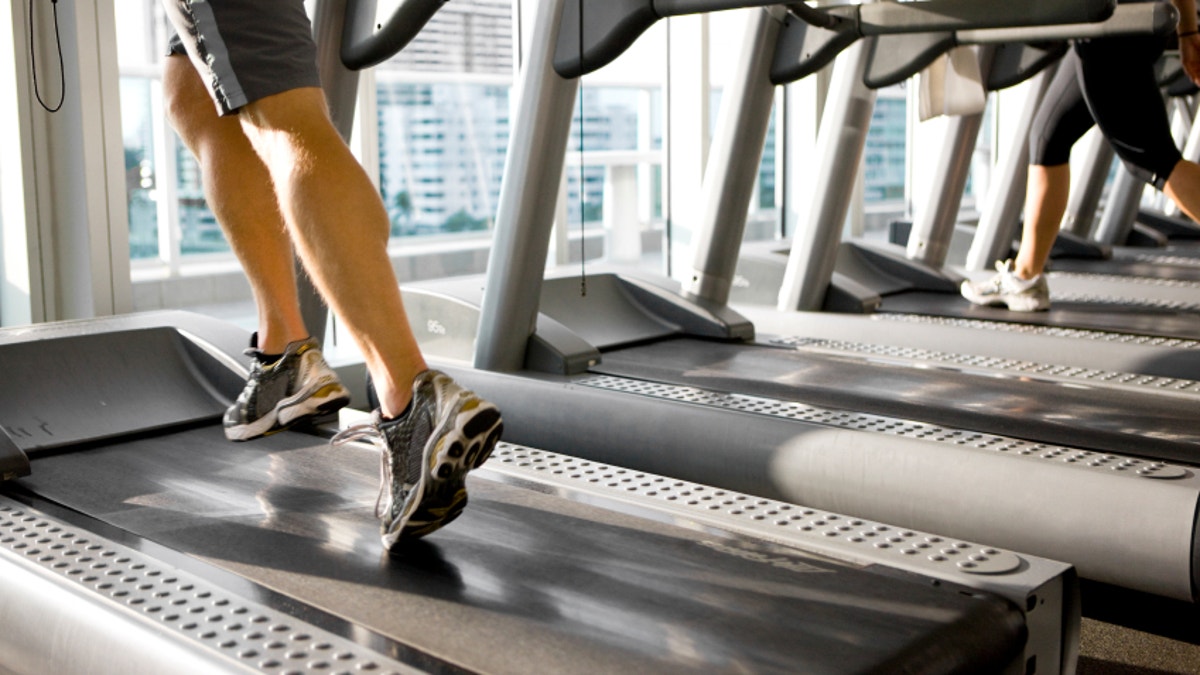
When fitness instructor Shirley Archer plays Annie Lennox's song "17 Again" for her indoor cycling class, she urges students to connect with the vitality of their inner 17-year-old legs.
When she teaches yoga she rolls out the harp solos.
Experts say exercising to the proper music can boost your mood, kick your workout up a notch and channel the energy of a younger you.
"Fitness playlists are extremely important," said Archer, who is also a spokeswoman for the American Council on Exercise. "A number of studies show that music can impact mood, emotions, energy levels, even breathing and heart rates."
Archer, author of 12 books on fitness and wellness, including "Fitness 9 to 5," said the research comes from music therapy, sports, surgical recovery and gait training studies for people with neurodegenerative issues.
"Music is powerful because it stimulates different neural pathways in the brain and taps powerfully into our emotions and our memories," said Archer, who lives in Singer Island, Florida, and Zurich, Switzerland.
Not only can music help people power through workouts, she said, it can distract them from boredom, fatigue and discomfort.
"Think about how people who are middle-aged or older find their dancing feet when they hear tunes that were popular when they were in their teens or early 20s," she said.
Also a powerful tool for relaxation, music can help to slow and calm heart and breathing rates, reduce stress and evoke feelings of peace and balance.
A good fitness playlist will match the workout objectives, Archer said. An aerobic workout should start out with uplifting music at a tempo of about 130 BPM (beats per minute) and build to around 150 BPM.
"Studies show that this is a moderate aerobic pace for most people," she said. "Think of the tunes 'Stayin' Alive,' '9 to 5' or Justin Timberlake's 'Rock Your Body.'"
Toward the end of the workout, she said, the pace should slow again.
Maximum benefit
Deekron Krikorian, known professionally as Deekron the Fitness DJ, designs and produces fitness playlists for specific workouts based heavily on BPM.
"The typical exerciser listens to music to kill boredom, reduce the perception of pain," said Krikorian, whose hour-long podcasts, called Motion Traxx, are on iTunes. "The main purpose is to motivate you, but unless you fit the pacing to your workout, you're not getting the maximum benefit."
That's where Krikorian comes in.
"Every episode is set at a different BPM. We tweak it. We're able to manipulate it. Most people don't have the tools to do that on their own."
For most people, a power walk would involve 125-135 musical beats per minute, said Krikorian, who started out making fitness CDs for instructors and consumers. He said 135-145 BPM works for an elliptical workout or an easy jog. Above 150 BPM puts you in the running zone.
Some Motion Traxx podcasts include trainers to coach you through the workout.
The rise of the iPod and iPhone have allowed playlists to become so specific, he said.
"They let us bring music with us," he said. "Walkmans helped, but the iPod and iPhone have taken things to another level."
Josh Adler, who teaches spinning at the New York Health & Racquet Club, a chain of fitness centers in New York City and Long Island, creates his own playlist.
Pop divas Rihanna, Lady Gaga and Madonna are among his staples, along with music from the 1980s and 1990s he discovered on the dance floor.
"I want people to recognize a couple of songs," he said. "So the time goes by more quickly."
He said remixes are often ideally suited to the high-intensity interval training of his class.
"The first minute is a steady beat, the lyrical hook. Then the music intensifies on the chorus," he said. "The intervals last 30 to 60 seconds, which is perfectly matched to what your body needs to do."
Krikorian keeps his podcasts fresh by changing them at least once a month.
"Music can play a really big role in fitness if used the right way," he said. "It's a new twist on an old song that gets them really excited."
